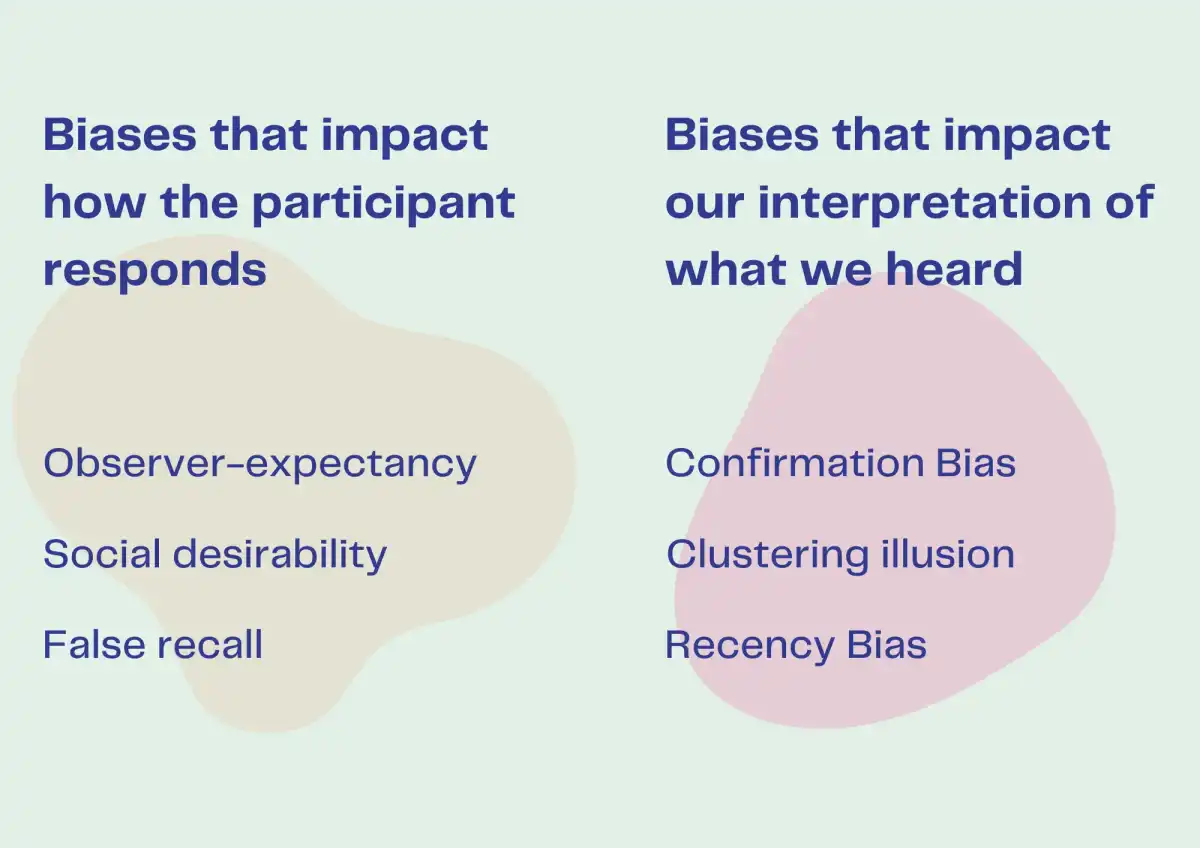How to train non-researchers to do user research
November 2021
·
4 min read

A key step in democratizing research is training non-researchers to do research. In this article, we'll share the 4 most important lessons that the world-class research team at Thumbtack learned while organizing more than fourteen workshops and training 180 participants from four teams across the company.
At Thumbtack, when the demand for research exceeded the bandwidth of the research team, they were forced to think about ways to scale their impact.
To do this, the team decided to democratize research, and teach colleagues in four different functional areas to conduct research on their own. Instead of becoming bottlenecks to research, the Thumbtack team wanted to be "beaded curtains", allowing anyone to press through into research, but also allowing the researchers to see what's happening.

They did this by creating a training program that combined research workshops with 1:1 coaching. Their goal was two-fold: to help non-researchers do more research and to teach them how to partner with research.
Lesson #1: Before learning comes unlearning
Old habits die hard. All of us have conversational habits that are often not appropriate for a research interview context, and need to unlearn.
Instead of preaching research best practices like gospel, researchers can accelerate the non-researchers' learning by making them realize some of the mistakes that are easy to make when starting to conduct research interviews.
One of the ways that the Thumbtack team has found to be effective at this is an interactive activity with one moderator, one participant and one observer. The moderator is given an intentionally difficult and vague prompt and asked to write a study plan and conduct a session with the participant. The observer has a list of best practices and biases that they've been trained previously on by the researchers, but does not intervene during the session.
Afterwards, there is an open discussion and deep dive into the mistakes that were made and how following best practices could have led to a better outcome, allowing the trainees to come to their own conclusion on what they could have done better.
Another similar version of this activity involves a researcher doing a live session where they intentionally do a bad interview and the participants engage in fun discussions around the quality of the moderation.
In both of these activities, the goal is to make the participants realize that what they think is high-quality research still has a lot of room for improvement and engage them in discussions around what the slippery points and research best practices are.
Lesson #2: Some training is best left for one on one coaching.
Workshops serve a lot of purposes, but people who are doing research for the first time need a bit more hand-holding. Researchers need to be intentional about what belongs in training and what belongs in coaching.
Synthesis for instance is an area that non-researchers are fairly uncomfortable with. The marketing team might be excited to do interviews but struggle with actually making sense of the data. In such a case, the research team would choose coaching over workshops and ask them to create a document ahead of time that lists out the research goals. Immediately after the interview, they have to fill out a Google Sheet with the responses. Printing this Google Sheet in large format and staring at the results while being away from a computer screen can reveal interesting trends based on the research questions.
The larger lesson here is that a combination of showcasing methods in workshops and then doing deep-dives during coaching works best.
Lesson #3: Cater the content to the audience.
After delivering workshops to four different teams- design, marketing, category management and customer success, the Thumbtack research team learned that the same content doesn't work for everyone. That's why, before each workshop, they started meeting with leaders and team members from each team to understand what their current research questions are and what would be most relevant for each team.
For instance, customer success isn't going to be going out and answering research questions. A designer, on the other hand, will definitely be fully executing on a study.
Since one of the important goals of the customer success team at Thumbtack is to get feedback for the product ops team, they are encouraged to treat the beginning of each support call like a micro research session, where they can gather more information and understand the problem before providing a solution for the customer. This has led to better information on the feedback system and consequently better insights for the product team.
A designer on the other hand must go through the full gamut of training on study planning and executing. They are also coached 1:1 to do synthesis, as this would be a key step in allowing them to unlock the value of research.
Lesson #4: Biases are sticky
At Thumbtack, the common thread in the research training process for any team, whether design, marketing, customer success or category management is a study of human biases. The researchers have learned to spend at least ten minutes for each training on covering how we are impacted as researchers and as humans by biases.

The focus is on six different biases that impact how the participant responds to a moderator in an interview and how these impact the interpretation of what the researcher hears.
Thumbtack researchers were surprised to find that many people didn't know about biases and were immediately able to apply the knowledge not only in the training, but also when they walked out the door. In fact, learning how susceptible humans are to bias has proved to be very popular among participants and crowd favorite for these trainings.
Final Thoughts
Not everyone will do their own research after undergoing training, but an added benefit of training everyone in the company to do research is that participants leave with a greater understanding of what research is, and what researchers do. As a result, they can interface with the research team better.
Another benefit of democratizing research is that the impact goes beyond better findings from the field. For instance, a designer who goes through research training can not only come back with findings, but also interface with the people who are making the decision and point out and explain what research is, how it can help and how it can"t help in a particular situation.
_Getting everyone involved in research becomes easier when you have the right collaboration tools. Reduct allows everyone in your team to securely archive your research videos and search, edit and share clips by using the transcript as the editing medium!

![[Advancing Research 2022] What Design Research can learn from Documentary Filmmaking](/static/a0a907b113aa60d7720b84b21e85dbaa/06771/documentary-film-meets-design-research.webp)
